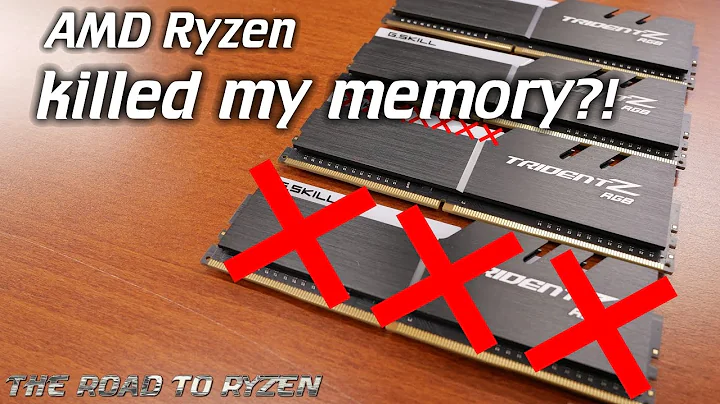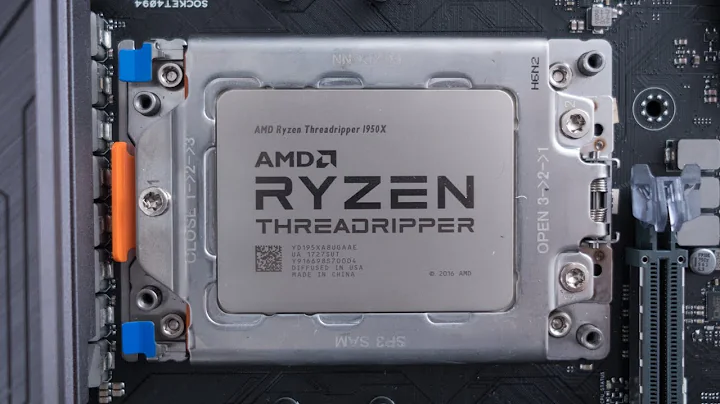Beware of Counterfeit CPUs in Sealed Boxes: AMD Chip Swap Scam
Table of Contents:
- Introduction
- The AMD Chip Swap Scam: What You Need to Know
- How the Scam Works: The Swap Technique
- Identifying Counterfeit AMD Ryzen 5950x CPUs
- Protecting Yourself from the Scam: AMD's Guidelines
- Signs of Tampering: Red Flags to Watch Out For
- Inspecting the CPU: Spotting Fakes
- The Impact of the Chip Swap Scam on Businesses and Customers
- Recommended Security Procedures for Retailers
- Fixing the Vulnerability: Suggestions for AMD
- Conclusion
The AMD Chip Swap Scam: What You Need to Know
In recent times, an alarming scam has emerged in the tech industry that involves the replacement of genuine AMD chips with counterfeits. What makes this scam particularly concerning is that the counterfeits are being sold in authentic retail packaging with the holographic seal intact, making it difficult for consumers to detect the switch. This article will delve into the details of the AMD chip swap scam, explain how the technique works, and provide crucial information for protecting yourself from falling victim to this fraudulent activity.
How the Scam Works: The Swap Technique
The scam revolves around the manipulation of the inner packaging of AMD 5000 series CPUs, specifically those that are sold without a CPU cooler. The inner packaging contains a cardboard spacer device that can be deformed to create space within, allowing attackers to open the Package and replace the genuine CPU with a counterfeit one. The holographic seal on the outer packaging remains intact, giving the appearance of an authentic product. The counterfeit chip is cleverly designed to mimic the appearance of the genuine chip, making it challenging to discern the switch without closer inspection.
To demonstrate the feasibility of the swap technique without breaking the seal or damaging the package, I have performed a full demonstration in a video linked in the description. The video showcases the ease with which the switch can be executed, highlighting the vulnerability in the packaging system and alarming users about the prevalence of this scam.
Identifying Counterfeit AMD Ryzen 5950x CPUs
Detecting counterfeit chips can be a challenging task due to the high level of deception involved. However, there are steps you can take to protect yourself. AMD has provided guidelines on how to determine the authenticity of their retail boxes, which include checking for an intact seal, inspecting the holographic effects of the seal, scanning the QR code for product details, and matching the serial numbers on the CPU with the seal. While these guidelines are helpful, they may not be foolproof in identifying this particular counterfeit due to the authenticity of the seal and matching serial numbers.
It is crucial to remain vigilant and look for signs of tampering, even if they appear minor. Superficial wear, tearing at the corners of the box, and small damages are red flags that indicate the swap technique may have been employed. Close inspection of the chip through the box window can also reveal discrepancies between authentic laser-etched lettering and printed stickers used by counterfeiters.
Protecting Yourself from the Scam: AMD's Guidelines
While the existing guidelines provided by AMD are a good starting point, it is essential to stay informed about the ever-evolving techniques utilized by scammers. Inspecting the packaging for signs of tampering is crucial before making a purchase. It is recommended to question any packaging damage and report it to the retailer. Additionally, retailers should ensure their security procedures are not solely reliant on the seal, as it does not guarantee the absence of tampering. Regular inspections for signs of tampering throughout the supply chain are vital to mitigating the risk.
Signs of Tampering: Red Flags to Watch Out For
When inspecting the packaging, there are several signs that indicate possible tampering. Superficial wear and tear, damages to the box, and abnormalities at the corners or flaps should raise suspicions. These minor damages are telltale signs of the swap technique being performed. By paying attention to these indicators, consumers can protect themselves from falling victim to the chip swap scam.
Inspecting the CPU: Spotting Fakes
Closely inspecting the CPU itself can also help in identifying counterfeit chips. While the plastic cover of the inner packaging may complicate the inspection, differences in the reflection and appearance between laser-etched authentic chips and printed sticker counterfeits can sometimes be discerned. Being diligent in examining the chip before purchasing can save users from unwittingly purchasing a fraudulent product.
The Impact of the Chip Swap Scam on Businesses and Customers
The chip swap scam carries significant consequences for both businesses and customers. Retailers should implement robust security procedures to protect their customers from receiving counterfeit products. Any returns or suspicious packaging should be thoroughly inspected. The presence of tampered packages in the supply chain can harm a business's reputation and erode customer trust. Customers, on the other HAND, may suffer financial losses and experience performance issues with their devices.
Recommended Security Procedures for Retailers
To combat the chip swap scam, retailers should enhance their security procedures beyond solely relying on the integrity of the seal. Regular inspections for signs of tampering, training staff members to identify red flags, and close collaboration with manufacturers like AMD to stay updated on scam techniques are essential. By implementing thorough security measures, retailers can protect themselves and their customers from falling victim to this fraudulent activity.
Fixing the Vulnerability: Suggestions for AMD
In light of the vulnerability exposed by the chip swap scam, it is crucial for AMD to address this issue promptly. One possible solution is to modify the cardboard spacer device in the packaging to make it more solid or less deformable. By eliminating the ability to create space for manipulating the inner package, the vulnerability can be significantly reduced or eliminated altogether. It is essential for AMD to invest in improving the tamper-evident packaging system to restore consumer confidence.
Conclusion
The AMD chip swap scam is a concerning issue that poses a significant risk to consumers and businesses alike. By understanding the techniques employed by scammers and being vigilant during the purchasing process, users can protect themselves from falling victim to this fraudulent activity. Retailers should also prioritize implementing robust security measures to identify and prevent the circulation of counterfeit chips. AMD must address the vulnerability in their packaging system to restore trust in their products. Through collective efforts, we can combat the chip swap scam and preserve the integrity of the tech industry.
Highlights
- The AMD chip swap scam involves the replacement of genuine chips with counterfeits in authentic retail packaging.
- Attackers manipulate the inner packaging, making it difficult to detect the switch without closer inspection.
- AMD's guidelines for determining the authenticity of retail boxes may not be sufficient in identifying the counterfeit chips.
- Signs of tampering, such as superficial wear and tear, should be treated as red flags.
- Closely inspecting the CPU itself can sometimes reveal differences between authentic and counterfeit chips.
- The chip swap scam impacts businesses by damaging reputation and customer trust.
- Retailers should implement thorough security procedures to prevent the circulation of tampered packages.
- Suggestions for AMD include modifying the packaging to eliminate the vulnerability in the spacer.
- Collaborative efforts are necessary to combat the chip swap scam and restore consumer confidence in the tech industry.
FAQ:
Q: How widespread is the chip swap scam?
A: The full extent of the chip swap scam is not known, but it is likely that multiple cases exist beyond the one documented.
Q: Can the chip swap be detected by inspecting the package?
A: While signs of tampering can be observed, the authenticity of the seal and matching serial numbers may make it difficult to identify the switch.
Q: What are the consequences of falling victim to the chip swap scam?
A: Customers may experience financial losses and performance issues with their devices. Retailers' reputations may suffer, and customer trust may be eroded.
Q: Are there any recommendations for retailers to prevent the circulation of counterfeit chips?
A: Retailers should establish robust security procedures, closely inspect packaging for signs of tampering, and collaborate with manufacturers to stay updated on scam techniques.
Q: What steps should consumers take to protect themselves?
A: Consumers should carefully inspect packaging for signs of tampering, question any damages, and closely examine the CPU before purchasing.
Resources:
 WHY YOU SHOULD CHOOSE TOOLIFY
WHY YOU SHOULD CHOOSE TOOLIFY

























